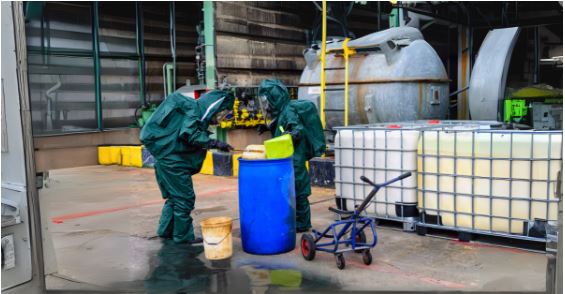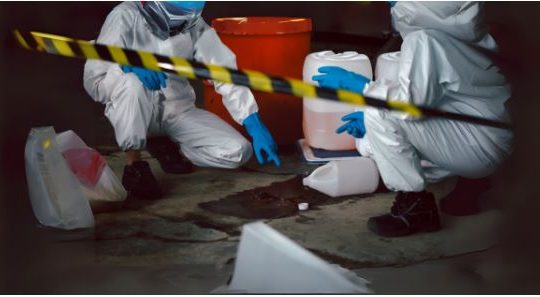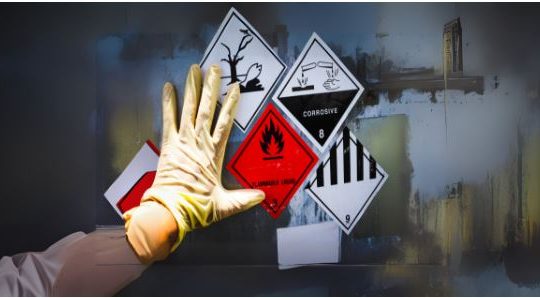
Level 3: Hazardous Materials Handling and Spill Response
Course Overview
The Level 3 Hazardous Materials Handling and Spill Response course provides advanced training for professionals responsible for managing hazardous substances and responding to spills in the workplace. The course focuses on understanding hazardous materials, mitigating risks, and implementing effective response strategies to prevent harm to personnel, property, and the environment.
This training is ideal for supervisors, safety officers, and emergency responders in industries such as manufacturing, oil and gas, construction, healthcare, and transportation.
Benefits
- Advanced Knowledge: Gain in-depth understanding of hazardous materials and their handling protocols.
- Workplace Safety: Minimize risks associated with hazardous materials exposure and spills.
- Regulatory Compliance: Learn to adhere to local and international hazardous material handling regulations.
- Preparedness: Develop robust spill response and emergency management plans.
- Enhanced Career Opportunities: Boost qualifications for senior roles in health and safety management.
Learning Outcomes
Upon completing this course, participants will:
- Identify and classify hazardous materials based on their properties and risks.
- Interpret Safety Data Sheets (SDS) and regulatory guidelines for hazardous substances.
- Implement best practices for the safe storage, transport, and handling of hazardous materials.
- Conduct thorough risk assessments and implement control measures.
- Respond effectively to hazardous material spills, including containment, cleanup, and disposal.
- Use spill kits and personal protective equipment (PPE) correctly and safely.
- Develop and review workplace policies for hazardous materials handling.
Study Units
- Introduction to Hazardous Materials
- Understanding hazardous material classifications and labeling systems.
- The role of GHS (Globally Harmonized System) in hazard communication.
- Risk Assessment and Hazard Control
- Conducting detailed risk assessments for hazardous substances.
- Applying the hierarchy of controls to mitigate risks.
- Storage and Transportation of Hazardous Materials
- Safe storage requirements and segregation of incompatible substances.
- Best practices for transporting hazardous materials safely.
- Spill Response Planning
- Developing spill response protocols tailored to workplace needs.
- Training staff to handle spill incidents efficiently.
- Using Spill Kits and PPE
- Overview of spill kit components and their applications.
- Proper selection, use, and maintenance of personal protective equipment.
- Spill Containment and Cleanup Techniques
- Containing spills using physical barriers and absorbents.
- Cleaning up spills with minimal environmental impact.
- Waste Management and Disposal
- Handling and disposing of hazardous waste in compliance with regulations.
- Documentation and reporting requirements for hazardous waste management.
- Legal and Regulatory Requirements
- Understanding workplace responsibilities under local and international laws.
- Preparing for regulatory inspections and audits.
- Crisis Management and Incident Reporting
- Coordinating with emergency response teams.
- Investigating incidents and preventing recurrence.
Career Progression
This course prepares participants for advanced roles, such as:
- Hazardous Materials Supervisor: Oversee the safe handling and storage of hazardous substances.
- Health and Safety Manager: Develop and implement workplace safety programs.
- Environmental Compliance Officer: Ensure adherence to hazardous materials and waste management regulations.
- Emergency Response Coordinator: Lead spill response and recovery operations.
- Safety Trainer: Educate teams on hazardous materials handling and spill control.
Our assessment process is designed to ensure every learner achieves the required level of knowledge, skills, and understanding outlined in each course unit.
Purpose of Assessment
Assessment helps measure how well a learner has met the learning outcomes. It ensures consistency, quality, and fairness across all learners.
What Learners Need to Do
Learners must provide clear evidence that shows they have met all the learning outcomes and assessment criteria for each unit. This evidence can take different forms depending on the course and type of learning.
Types of Acceptable Evidence
Assignments, reports, or projects
Worksheets or written tasks
Portfolios of practical work
Answers to oral or written questions
Test or exam papers
Understanding the Structure
Learning outcomes explain what learners should know, understand, or be able to do.
Assessment criteria set the standard learners must meet to achieve each learning outcome.
Assessment Guidelines
All assessment must be authentic, current, and relevant to the unit.
Evidence must match each assessment criterion clearly.
Plagiarism or copied work is not accepted.
All learners must complete assessments within the given timelines.
Where applicable, assessments may be reviewed or verified by internal or external quality assurers.
Full learning outcomes and assessment criteria for each qualification are available from page 8 of the course handbook.
Top Courses
No results found.
Related Courses
Let's Get in touch
Deleting Course Review
Course Access
This course is password protected. To access it please enter your password below:



